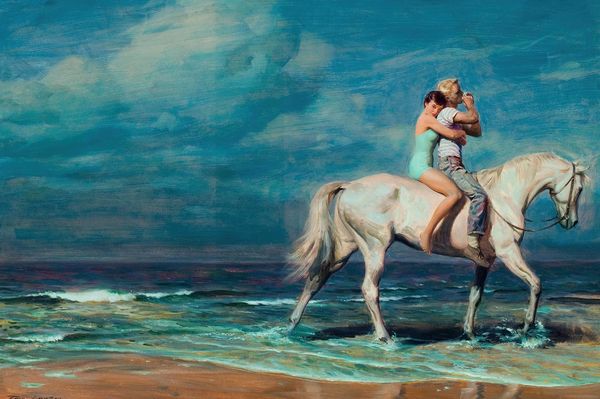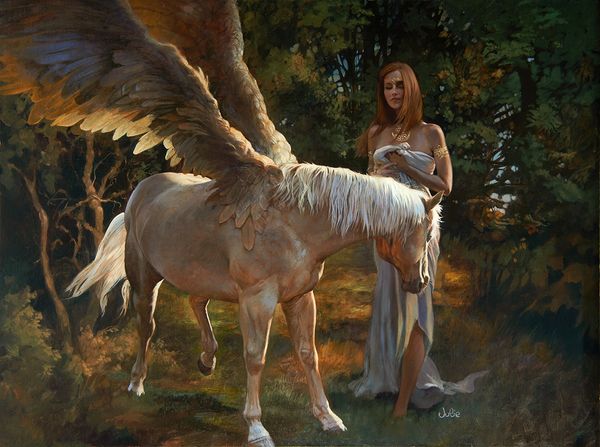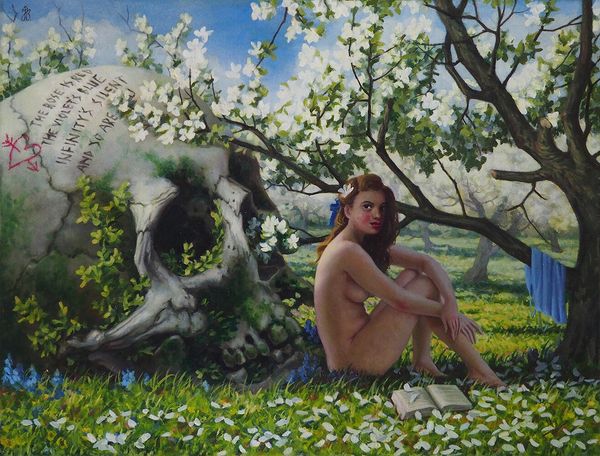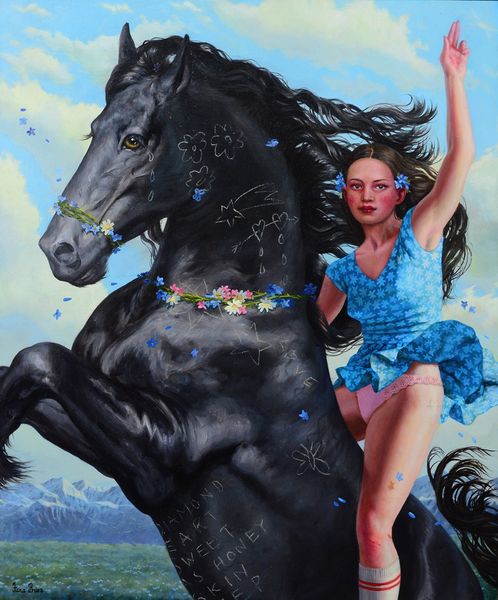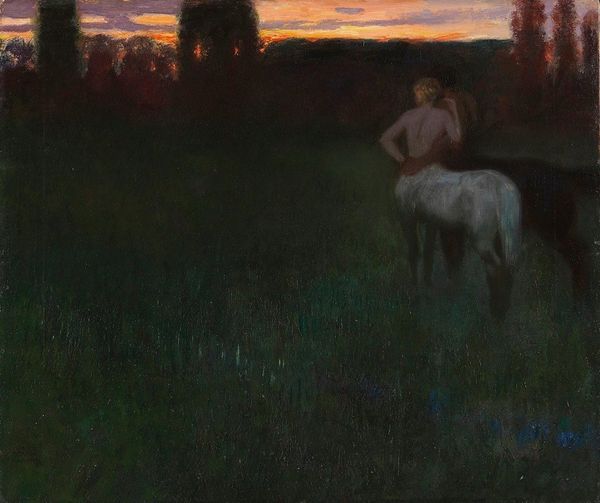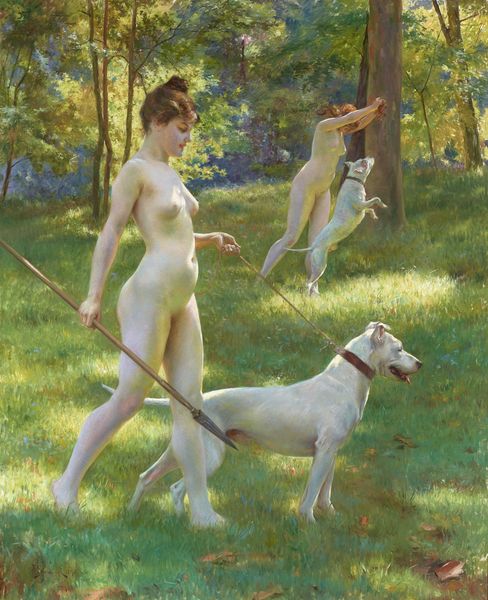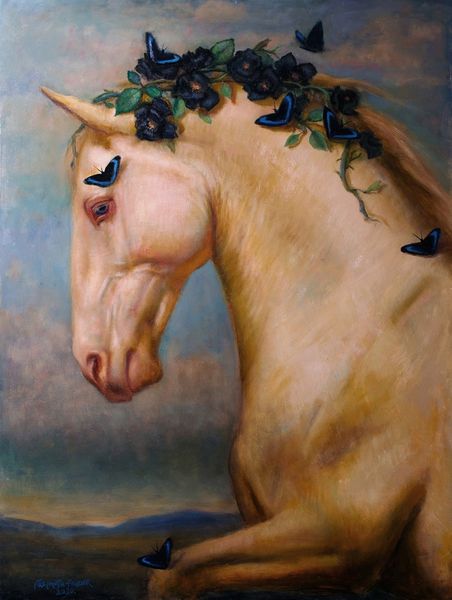
painting, oil-paint
#
portrait
#
figurative
#
painting
#
oil-paint
#
landscape
#
figuration
#
acrylic on canvas
#
nude
#
modernism
#
realism
Copyright: Modern Artists: Artvee
Editor: Here we have Timur Akhriev’s "ODIN," created in 2021, rendered in oil paint. The almost luminous quality of the horse set against the darker, somewhat undefined background strikes me. What do you make of it? Curator: It's a fascinating piece that, to me, speaks volumes about power dynamics and representation. The young boy positioned atop the horse immediately evokes a sense of dominance, even entitlement. How do we reconcile that with the innocence often associated with childhood? Editor: That's interesting! I was just seeing him as kind of exposed and vulnerable up there, but power... I hadn't really considered that. Curator: Precisely! And isn't the horse itself interesting? Its whiteness can be read as a symbol of purity, or even superiority, playing into historical narratives where whiteness is equated with power. Do you see any echoes of those narratives here? Consider, too, the gaze: both subject and steed command our attention. Editor: I do see that now! So, are you saying the artist is making us think about those power dynamics and histories through this single figure in the landscape? Curator: Exactly! The painting compels us to confront uncomfortable questions about privilege, representation, and the ways we've been taught to see the world, particularly through the lens of Western art history. How does the title "ODIN," referencing Norse mythology, complicate this further? Is this boy a modern-day deity, imbued with inherent authority? Editor: Wow, I hadn’t thought of it that way at all. I see the work with completely new eyes now. It really goes beyond the surface level. Curator: Indeed. And that's precisely where the real power of art lies – in prompting these critical dialogues and expanding our understanding.
Comments
No comments
Be the first to comment and join the conversation on the ultimate creative platform.

